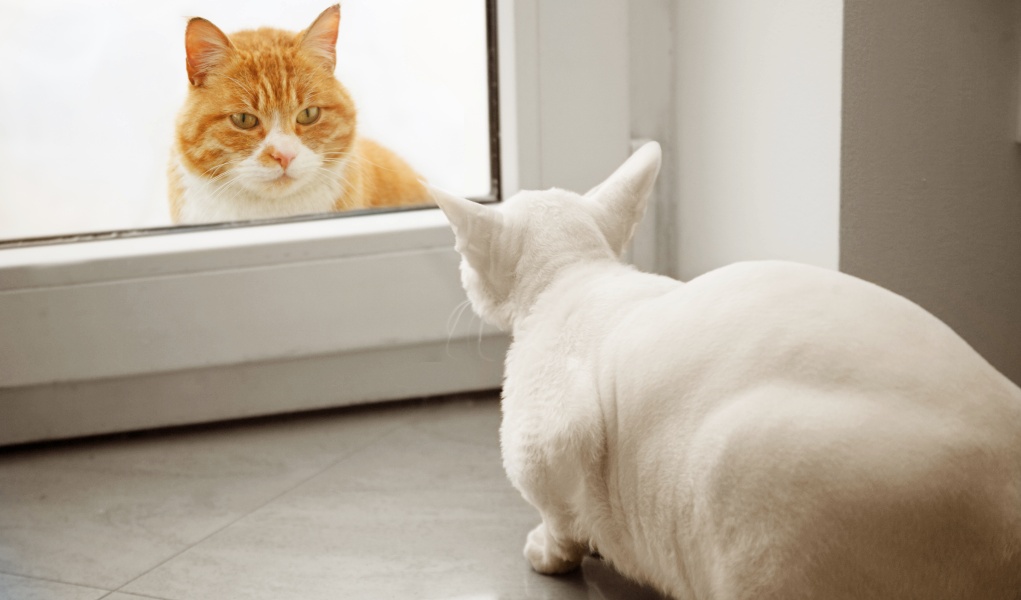Adopting a new kitty is such a special occasion. But, have you thought about how to introduce your new furry family member to an existing cat in your home? Cats are fickle creatures, so there is no guarantee that they will get along. Learning how to introduce your cats to each other gradually will be crucial to their future together.
No matter what the reason is that you’ve adopted another cat, you need to make the introduction process as smooth as possible. The smoother the introduction, the faster the cats will get used to each other and be able to cohabitate in peace.
As I mentioned, it is not a guarantee that two cats will get along with each other. Planning the introduction in advance and making it a gradual process will greatly increase the chances that the introduction will be a success.
How To Introduce Cats To Each Other
a step-by-step process
Step 1: Trade scents
If you’ll be adopting a new cat from a shelter or breeder, ask for a blanket with the new cat’s scent on it. Also, ask if it is okay to bring in a blanket from your home that has your resident cat’s scent on it.
By doing this, you’ll allow the cats to get used to each scent gradually. This is a very important identification factor for cats, so it will be a big help in the introduction process if you can make this happen.
Step 2: Prepare a separate space
Find a quiet room in your home, like a spare bedroom or bathroom, where you can keep the new cat separated for a few days. This will give her time to get used to the new environment, new smells and new human members of your family before getting introduced to your resident cat.
If possible, choose a room that has an inch or more of open space under the door. This will allow your resident can and your new cat to be able to sniff each other and interact under the door without having full access to one another.
You’ll also need to make sure that this space has all of the amenities that your new cat will need, including food, water, a litter box, toys and a bed.
Step 3: Feed them together (but separated)
After the new cat has been in your home for 24 hours, begin feeding the cats on opposite sides of the door. If one of the cats refuses to eat near the door, place something especially appetizing such as canned tuna or one of my homemade cat food recipes in their bowl.
Eating is a positive experience for cats. By having the cats do something positive in close proximity to each other, they will associate the interaction as a positive experience. If one of the cats growls or hisses under the door, continue this routine until the aggressive behavior stops. If the aggressive behavior continues for more than a week, it is likely that this introduction is not going to work out.
SIMILAR: Introduce Your Cat and Dog Successfully – Important Tips To Remember
Step 4: Switch places
If all is going well so far, it’s time for the cats to switch places. Your resident cat should now be kept in the room, and the new cat should get an opportunity to explore his new environment. This will allow both cats to get used to the other’s scent. It will get your new cat used to his new home, as well.
Each cat should eat and drink from the other cat’s bowls. Keep feeding them close to the door that separates them. They should use each other’s litter boxes, but be sure to clean each litter box before the switch is made.
After 2-3 days, the cats should be getting more comfortable with each other. The last step in this gradual process is to allow the cats to see each other without having access to each other. Open the door, but keep a pet gate there to separate the cats. You may need to stack two gates on top of each other to make it high enough that they can’t jump over.
Be prepared for the cats to hiss and growl at each for a brief period. They may try to swat at each other through the gate. Usually, cats will work things out on their own after a day or two.
If the cats continue to fight or become aggressive toward one another after a few days, it’s a pretty good sign that this combination isn’t going to work out. However, if the cats seem to be tolerating each other, it’s time to let them interact without anything between them.
Even if things are going fine in the beginning, it’s best to keep the cats separated while you’re away until you’re 100% comfortable leaving them alone together. You know your pets better than anyone, so observe their behavior closely and make your own decision on when it’s safe to leave them alone together.
READ NEXT: The Evolution of Cats – Knowing Our Favorite Furry Friend














